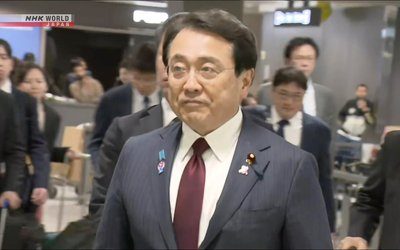More on National


The quarrel between the Minister Dr. Prakash Sharan Mahat and Secretary Shankar Koirala came to the fore after their public spat over the appointment of Arjun Bahadur Karki – the former Managing Director of Nepal Electricity Authority (NEA) – as the chief of Upper Tamakosi project.
Despite the cabinet decision to appoint Karki as the chief of the project, the minister later backtracked and asked the Secretary not to hand over the appointment letter. However, the Secretary – probably thinking the caretaker government did not have much life remaining – went ahead and gave the letter, inviting the wrath from the minister.
In what many private power developers see as the consequence of the rivalry between the minister and the secretary, the Minister (on November 28) wrote a letter – sealed confidential – to the Department of Electricity Development, asking for the suspension of all licensing procedure.
The licensing procedure, normally, falls under the domain of Secretary. The Minister has said that he wants to ‘evaluate’ the procedure and, therefore, has ordered for their suspension for the time being.
“The decision to suspend the procedure appears ill-intentioned. We agree that the Minister can and should evaluate whenever it is necessary. But in the name of evaluation, he can’t just shut down the whole licensing procedure, suspending renewals, generation licenses and so on,” said Shailendra Guragain, a private power developer and a member of Independent Power Producers Association of Nepal.
The latest spat in the Energy Ministry comes at a time when the efforts to overcome the crippling load-shedding appear uninspiring.
This winter, the NEA has projected the load shedding hours to cross 14 hours a day. In the last one year, only 2 MW of new power plants came into operation and in the coming one year, another paltry 16 MW of additional power is expected to join the national grid.
“These are very small additions if you compare with the growing additional demand of anything between 60 to 100 MW every year,” said Guragain, who is behind two companies that will be generating 9.5 MW of additional power in the next one year.
Irony
The decision of the Energy Minister was followed by reports in media quoting NEA officials that the state-owned power monopoly was considering stopping entering into any new Power Purchase Agreement (PPA) - citing growing losses.
Hari Bairagi Dahal, president of Small Power Developers Association, is exasperated with the situation.
“In a country where the Minister is busy quarreling with his Secretary, where power authorities talk about stopping PPA, how can anyone expect load shedding will be resolved,” said Dahal.
In fact, the IPPs had been demanding that the current PPA rates offered by the NEA were inadequate. The NEA has offered Rs 4 and Rs 7 per unit, respectively, for wet and dry seasons. The IPPs say this rate is not enough to lure the investors.



